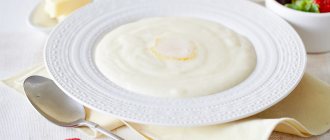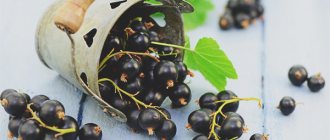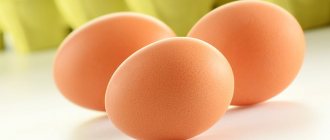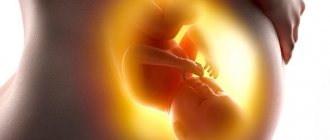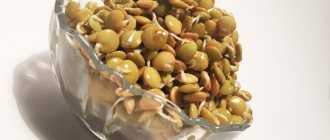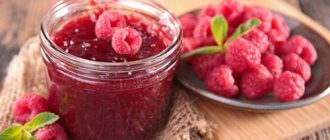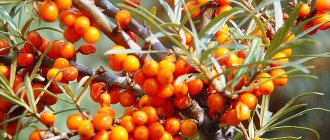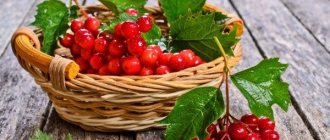Benefit
The rich composition of nutrients, high content of micro and macroelements makes black currant one of the most useful plants in the world. If you include currants in your daily diet, the positive effect will not be long in coming.
It contains vitamins A, C, K, PP, group B, calcium, iron, magnesium, potassium, as well as pectin and flavonoids.
Black currant has the following properties:
- strengthens the immune system;
- has a diuretic effect;
- able to fight inflammatory diseases of various origins;
- has a positive effect on the functioning of the nervous system;
- cleanses the body of waste and toxins;
- strengthens the cardiovascular system;
- helps normalize intestinal function;
- renews body cells, which is the prevention of cancer;
- helps with colds and viral infections;
- strengthens the skeletal system;
- can lower blood pressure.
Black currant is very useful for women of any age. Berries have a rejuvenating, restorative effect on the female body. The positive effect affects the condition of hair, nails and skin. Currants are an indispensable aid for painful menstruation, and also help relieve discomfort during menopause.
Pregnant women should include currants in their diet, as the rich complex of vitamins and minerals included in its composition will have a beneficial effect on the development of the unborn baby.
Effect on lactation
It is difficult to overestimate the positive properties of black currant, and during breastfeeding the berry is even more useful. Black currant increases the flow of milk and saturates it with useful elements.
A young mother should know that in order to avoid the slightest harm to the baby, pediatricians advise using a very small amount of berries in their pure form. But drinks made from berries are recommended to be included in the diet daily. Currant teas, decoctions, fruit drinks, compotes and jelly are especially useful.
A decoction of the leaves of the black currant bush is considered the safest drink. It will have a positive effect on milk production and will not cause any allergic reactions in the baby.
Drinks and dishes made from red currants
During lactation, it is allowed to consume currants in fresh and processed form. Many women simply cannot deny themselves the pleasure of drinking aromatic compote and enjoying currant jam.
Fresh berries are the most useful, but you can only buy natural fruits in July. This is why housewives freeze red currants or can them. Frozen berries lose some of their beneficial properties, but they are still useful for breastfeeding.
The fruits should be eaten ripe, without visible damage to the shell when fresh. If you prefer to eat the product cooked, then you can use your culinary imagination.
Cook compote or fruit juice, bake a delicious pie or prepare dumplings, don’t be lazy and make currant ice cream.
But it is worth considering some nuances when preparing dishes:
- When preparing dishes, it is better to put a minimum of sugar, because... Excessive amounts of glucose can harm the baby.
- You need to cook the compote until it boils, because... long boiling destroys vitamins.
- Juices should be made with a juicer. Use homemade drinks rather than store-bought products that contain preservatives, which are not beneficial for either mother or baby.
Frozen berries also work. Make sure you have enough space in your freezer in advance. While breastfeeding, you can also enjoy blackcurrant in the form of jam.
How to introduce it into the mother's diet?
Black currant, due to its high content of nutrients, during breastfeeding will only have a positive effect on the development and condition of the baby’s body, if you follow some rules.
Rule #1
Like any other berry, currants can cause allergic reactions. Therefore, it is better to wait until the baby is 3 months old and his body is a little stronger.
Rule #2
The inclusion of berries in the diet should occur gradually. You should start eating a few berries a day. This way, a nursing mother will be able to track whether the baby has an allergic reaction.
If no allergic manifestations occur the next day, you can gradually increase the amount of healthy berries. If even a slight rash appears, the nursing mother should immediately stop eating the berries.
Rule #3
It is important to pay attention to the child’s behavior after blackcurrants have been introduced. Apart from allergic reactions, the baby should not have any digestive problems. Otherwise, this can be regarded as a negative manifestation of the new product.
If there are no changes in the child’s condition, you can continue eating berries and drinks.
Find out if blackcurrant is good for breastfeeding
The summer-autumn season is the time for berries, fruits and vegetables. Natural vitamins and nutrients will best help a young mother recover after pregnancy, but are natural products safe for the baby during lactation?
Chemical composition and benefits of eating fruits for mother and child
Blackcurrant bushes have great benefits, from their aromatic berries to their green leaves. Research by scientists has shown that consuming the product has the following beneficial effects on the body of a young mother:
- strengthening the immune system;
- increasing the body's resistance to viruses and colds;
- faster recovery after surgery (in case of cesarean section);
- removal of waste and toxins, normalization of digestive processes;
- elimination of symptoms of nausea and dizziness.
Important! Black currant is one of the products that can improve lactation, the quantity and quality of mother's milk.
The positive effect of berries on the body is explained by their chemical composition. The fruits contain a colossal content of vitamin C, several times higher than the quantitative indicator of citrus fruits and rosehip infusion.
ItemContent/ 100g
| Vitamin B9 | 5 mcg |
| Vitamin H | 2.4 mcg |
| Vitamin A | 17mcg |
| Vitamin B1 | 0.03 mg |
| Vitamin B2 | 0.04 mg |
| Vitamin B6 | 0.1 mg |
| Beta carotene | 0.1 mg |
| Vitamin B5 | 0.4 mg |
| Vitamin E | 0.7 mg |
| Vitamin PP | 0.7 mg |
| Vitamin C | 200 mg |
In addition to vitamins, black currant berries contain rare microelements:
- cobalt;
- molybdenum;
- potassium;
- copper.
ItemContent/ 100g
| Potassium | 350.5 mg |
| Calcium | 36.2 mg |
| Phosphorus | 33.8 mg |
| Sodium | 32.5 mg |
| Magnesium | 31.6 mg |
| Chlorine | 14.1 mg |
| Sulfur | 2.4 mg |
| Iron | 1.3 mg |
| Manganese | 0.18 mg |
| Zinc | 0.13 mg |
| Iodine | 1.7 mcg |
| Cobalt | 4.2 mcg |
| Fluorine | 17.6 mcg |
| Molybdenum | 24.8 mcg |
| Bor | 55.1 mcg |
| Copper | 130.4 mcg |
Currant is a common shrub that grows well in all climatic regions. Its fruits combine high nutritional value and availability, while at the same time being perfectly heat-treated.
Blackcurrant dishes allowed during breastfeeding
From the point of view of nutritional value, currants are extremely attractive, and the main argument in favor of its use is to enhance lactation. However, in order to protect yourself and your baby from undesirable consequences, pediatricians advise eating only some of the berries fresh, because currant jelly, compotes and teas are no less healthy. You can drink a decoction of black currant leaves - it is less dangerous for the baby, but also helps improve the process of milk formation.
Blackcurrant tea
To prepare a tasty and aromatic drink for 3 mugs, you will need the following components:
- black long tea (4 teaspoons);
- 1 black currant;
- blackcurrant leaf (2-3 pieces).
Pour boiling water over the teapot and pour the tea leaves into it. Wash and chop the blackcurrant leaves, lightly mash the berries and add everything after. Pour boiling water over all components and cover the teapot with a clean towel for 15-20 minutes. Delicious and healthy tea is ready.
Currant jelly
An important feature of this drink is its versatility - jelly can be drunk by both mother and baby, starting from 4 months.
For preparation you will need the following components:
- green apples (2 pieces);
- 2.5 glasses of boiled water;
- a spoonful of gelatin or starch;
- sugar (2 dessert pieces);
- currant berries (2 tablespoons).
Wash, peel and grate the apples, crush the blackcurrants and mix with applesauce, sprinkle with sugar and leave for a quarter of an hour. After the time has passed, add 250 ml of water and simmer over low heat for 20 minutes. Then dissolve the starch in 50 ml of cold water and pour into the pan in a thin stream. The drink should be boiled until thickened, and consumed when cooled without adding sugar. This jelly is useful for preventing diseases of the digestive system and helps cope with diarrhea due to its strengthening effect on the intestines. It is better for the mother to drink it and give the drink to the baby in the morning, starting with one tablespoon per day, in the absence of allergic reactions, gradually increasing the dose.
In addition, currant berries for a nursing woman can be added to the usual porridges (cereals, grains or dairy), curd products and combined with dietary components (bran, flakes and bread).
Possible negative consequences
Just as useful substances enter the baby’s small, fragile body through mother’s milk, some that are not entirely necessary can also enter. Currant berries are classified as potential allergens because they contain a large amount of vitamin C and those plant components (essential and vegetable oils, food acids, flavonoids, rutin, carotene, etc.) that can cause the following reaction in the baby:
- rash and small itchy redness;
- indigestion;
- unpleasant crust on the cheeks;
- anxiety or sleep disturbances.
If such symptoms appear, the berry must be excluded from the diet for at least a month, otherwise the baby’s body will trigger the mechanism of producing antibodies, which will lead to the development of an allergy not only to this type of product, but also to similar ones.
Symptoms of intolerance may not appear immediately, so you need to constantly monitor your nutrition and adjust your diet.
In addition, doctors advise women with high blood clotting, high acidity and stomach diseases (ulcers, gastritis) to eat black currants with extreme caution. These conditions will not be passed on to the baby, but will cause a lot of inconvenience to the young mother.
Consumption standards
It is known that the product will be beneficial when it is used in moderation. Approximate calculations show that the daily requirement of vitamin C is completely covered by 50 fresh berries or fruits that have been flash-frozen. Pediatricians categorically do not advise eating currants if the baby is less than 3 months old, since the baby’s body is still weak.
To find out if a child is allergic to berries, on the first day of introducing the product into her diet, the mother needs to limit herself to just a few fruits - this is quite enough to identify the baby’s reaction to the new product.
The consumption rate is 50-75 g per day. Eating the product every day is not forbidden, but the mother’s consumption of berries every other day is more preferable for the child’s body. Before eating, the fruits should be thoroughly washed with water and doused with boiling water.
It is important to remember that fresh (frozen) berries and blackcurrant jam are not interchangeable! Eating jam, even homemade, is not allowed while breastfeeding.
The baby’s health depends entirely on the mother, her conscientiousness and caring attitude toward herself and her baby. A well-designed menu and constant monitoring of consumed products is an important step for the harmonious development of a child during the breastfeeding stage.
Video - general principles of nutrition for mothers while breastfeeding
moy-kroha.info
Tea
For preparation you will need the following ingredients:
- a few black currant leaves,
- a few berries
- three spoons of natural loose black tea.
Preparation:
- A glass or porcelain teapot should be rinsed with boiling water before preparing the drink, so the ingredients will better reveal their beneficial properties and aroma;
- pour all the ingredients into the kettle and pour boiling water over it;
- Cover the kettle with any cloth and steep the drink for twenty minutes.
Such tea will not only not cause harm, but will also be an excellent vitamin alternative to regular tea.
Kissel
Kissel is not only a storehouse of vitamins, but also a universal drink. Because it is recommended for both nursing mothers and children to drink it, starting from the age of two.
It’s quite easy to prepare the right currant jelly that won’t harm your baby.
Ingredients needed:
- half a glass of currants
- potato starch – 1 dessert spoon
- drinking water - half a liter.
Preparation:
- the berries need to be washed and then allowed to dry;
- chop the berries using a wooden spatula;
- Squeeze 1 tablespoon of juice from the resulting mixture and set aside;
- add water to the pulp and heat to about 60 degrees;
- strain the resulting broth using gauze or a strainer;
- dilute starch in berry broth;
- put on the stove and bring to a boil, stirring constantly to avoid the appearance of lumps;
- After the jelly has cooled, you need to pour the squeezed juice into it and stir.
This jelly is rich not only in vitamins, but also due to the large amounts of glucose and fructose in the berries, it has a pleasant sweet-sour taste. Adding sugar to jelly is allowed if the child has no allergies, and not earlier than six months after birth.
Danger of use for women and children during breastfeeding
There are not many contraindications for red and black currants, but it is worth knowing about them so as not to harm the body of the mother and child.
- Currants are not recommended for use in cases of thrombophlebitis, hepatitis, stomach and duodenal ulcers, and increased stomach acidity.
- Black currants, unlike red currants, contain more allergens, so if a child suffers from food allergies, then they must be consumed with extreme caution or completely excluded from the mother’s diet.
- To prevent your child from accidentally choking or sticking currants in his ear or nose while playing, it is advisable not to give your baby whole fruits.
- Blackcurrant is not recommended for children whose urine contains a lot of oxalates.
- Mothers whose children suffer from diathesis should not consume currants.
- The high content of vitamin K with excessive consumption of currants can lead to problems with blood clotting.
When can it be introduced into the diet?
In the first month after birth, it is especially important for a baby what his mother eats. At this time, the child’s weak, fragile body is just beginning to adapt to independent digestion of food. In addition to mother's milk or adapted infant formula, other foods are prohibited during this period.
Immediately after childbirth, a woman’s nutrition should be structured in such a way as to take into account two principles:
- setting up a woman’s body to produce enough milk,
- establishing proper functioning of the baby’s intestines.
Due to the high content of vitamin C, currants are considered a strong allergen, so for the first three months of a baby’s life, it is better for a nursing mother to refrain from eating currants.
During this period, the functioning of the baby’s body is completely dependent on the mother’s nutrition. The baby is not yet able to deal with irritants and allergens on his own.
To avoid any negative reactions from the baby’s fragile body, the first three months of his life should exclude any allergens from the mother’s menu and eat only neutral foods.
Is it possible to have black currants while breastfeeding?
A nursing mother has to limit herself in many ways during the first months after childbirth. At the same time, during this period she is in dire need of vitamins and minerals. Therefore, it is important for her to know which products will be especially useful and will not harm her baby. Let's talk about how currants are used during breastfeeding (black, white, red).
Is it possible to eat currants during breastfeeding?
Yes, you can. But there are several nuances. Due to its high vitamin C content, it is a potential allergenic berry. That is, there is a possibility that after the nursing mother eats it, the baby may be sprinkled with it. But this does not mean that the allergy will necessarily make itself felt. The risk of allergic reactions is affected by:
- amount eaten by mother;
- individual reaction of the child's body.
Therefore, black currants are allowed during breastfeeding, but, as with other allergenic products, caution is needed. Do not try other new foods on the day you eat currants, so that if your baby develops a rash, it will be very clear who is “to blame.”
The first portions should be minimal, 5-6 berries per day. If there are no consequences, you can increase your consumption of berries to half a glass a day - this is exactly how much you need to eat to meet your daily requirement of vitamin C.
If your baby has noticed rashes, don’t be upset. This does not mean that he will not be able to eat currants all his life. It’s just that now his body is not ready to accept such berries. But after a few months you can repeat the currant experiment again.
This black berry is one of the main sources of vitamin C
Benefits of berries
“Tasty and healthy” - these are two words to describe this beautiful berry.
We advise you to read:Can you eat berries while breastfeeding?
Here are some facts:
- Black currant is a record holder; it is in 4th place in terms of vitamin C content, second only to green walnuts, rose hips and actinidia fruits. However, remember that overripe berries contain much less ascorbic acid.
- There are also other vitamins: E (there is also quite a lot of it compared to other berries), PP, group B, a lot of vitamin K, pectin. Pantothenic acid (vitamin B5) contained in the berry plays practical importance for the vitamin balance in the human body.
- Among the minerals, the presence of potassium and high iron content are especially valuable. The composition also contains boron, manganese, fluorine, cobalt, zinc, copper, molybdenum.
Due to this composition, black currant during breastfeeding is extremely useful for strengthening the immune system, small capillaries, stimulating hematopoiesis, and also as an anti-sclerotic and antioxidant agent.
Currants come in different varieties: black, white, red...
As you know, there are three colors of currants. Are there any differences in it? Yes, but they are minor. The biggest difference is the iron content. Black and red berries have more iron than white ones. It turns out that if the mother has problems with blood clotting, it is better to eat white berries.
The diversity of the gooseberry family is amazing
White and red currants do not contain as much ascorbic acid as black currants, but they are rich in biotin, folic acid, and contain a lot of iodine. So it’s worth eating berries of all colors.
Leaf value
Currant leaves, both fresh and dried, also have healing properties. They are used as a diuretic and tonic, to increase appetite, and for rheumatic and colds. They are often included in vitamin preparations. The healing properties are due to the presence of essential oil in them, which has antiseptic, anti-inflammatory and diuretic effects.
Tea made from currant leaves is very useful. To prepare it, grind 2 tablespoons of leaves and pour 2 cups of boiling water over them. The decoction is infused for 20 minutes, after which it can be drunk. It is useful for mom to add raspberry leaves and currant branches to this tea.
It is known that 6 currants contain more ascorbic acid than lemon. Children under one year old, just like adults, need to strengthen their immunity, and therefore this delicacy will come in handy.
It is recommended to add berries to complementary foods at 8-10 months. Again, we start with a small portion (it is enough for the child to try 1-2 berries) and look at the baby’s reaction. If there is no allergy, you can give more. Currants are added to yoghurts and casseroles for children.
Parecha (red berry) makes excellent jam. Both adults and children love him
Precautionary measures
Berries are contraindicated for:
- increased stomach acidity;
- individual intolerance;
- high blood clotting rates.
In such cases, you should consult your doctor before use.
Usage options
Currants are eaten raw, added to compotes, fruit drinks, baked goods, jams and preserves are made, and the berries are frozen for the winter. If you choose the first option of use, then the nursing mother should follow simple rules:
- Introduce fresh currants into the diet at 2-3 months of the baby’s life; In the first month it is permissible to drink compote.
- The berries must be ripe, but not overripe, and free from cracks, plaque or rot.
- Berries grown on your own plot should be thoroughly washed in running water using a colander. If currants were purchased at the market and there is a suspicion that they have been processed, it is recommended to soak them for 20 minutes before eating.
- All allergenic foods during breastfeeding are consumed in the first half of the day, preferably in the morning.
Currant compote: Wash two handfuls of berries under running water, pour in 2 liters of boiling water, bring to a boil, add 2 tablespoons of sugar and cook for up to 5 minutes, after which the pan is removed from the heat and the compote is infused.
So, currants are a healthy berry that should definitely be included in the diet of a nursing woman if she or her baby does not have allergies. During the summer, replenish your vitamin supply naturally. And why not stock up on these berries for the winter by freezing them first.
mladeni.ru
Daily norm
Excessive consumption of currants during feeding is prohibited. You need to start introducing currants into your diet gradually, starting with a couple of berries a day. Every day the quantity can be increased by several pieces per day. Thus, within a week the serving size will reach 50 grams per day.
It is not worth increasing the daily portion, since oversaturation of the baby’s body with vitamin C can cause rashes and changes in stool. Even if the child had no reactions before.
Can a nursing mother eat blackcurrants?
Experts say that in many respects the development of a baby and a woman’s recovery after childbirth depends on her nutrition and the entire diet in general.
Mommy’s menu should also be safe, and therefore many mothers have questions, for example, whether black currants are safe when breastfeeding. In our article we will talk about this in detail, and also consider the beneficial and possible harmful properties of this wonderful berry.
Can a nursing mother eat black currants and how are they beneficial?
Everyone knows that berries are an incredibly healthy product. However, not every variety has as significant a list of beneficial properties as black currants.
These berries are rich in vitamins, microelements and strong antioxidants. All this makes them a truly unique product.
However, as you know, often even the healthiest food during lactation ends up on the list of not recommended products. Does this apply to black currants?
Not really. Of course, pediatricians advise caution when handling these berries, as they contain too many active ingredients. But in general, black currants are considered acceptable foods for breastfeeding.
Moreover, many doctors strongly recommend adding it to the diet of nursing mothers. This is primarily due to the unique chemical composition of the berries. Thanks to it, currant fruits have a complex positive effect on both the health of mother and child.
- The main benefit of blackcurrant is related to its effect on the cardiovascular system. Flavonoids contained in berries prevent the deposition of harmful substances on the walls of blood vessels. Thanks to this, nothing interferes with the blood flow and the blood circulates better throughout the body.
- Currants also contain omega-3 fatty acids. These compounds can significantly lower blood cholesterol levels, which is also extremely beneficial for the circulatory system. As a result, the risk of developing serious vascular diseases is reduced.
- Regular consumption of black currants can protect mother and baby from such a terrible disease as cancer. The fact is that these berries contain a significant amount of vitamin C. This compound is an antioxidant, and therefore neutralizes the harmful effects of free radicals - toxic substances that cause cell changes.
- Vitamin C is also an excellent immune stimulant. Eating currants by a nursing mother helps strengthen the immune system. As a result, the body is better able to resist seasonal diseases and, even if infected, recovers faster.
- Research shows that currant juice contains substances that have a strong antibacterial effect. These compounds help destroy infection in the urinary tract. This feature is especially relevant after childbirth, since during this period women often experience problems with the urinary system.
- Black currants contain a huge amount of such an important trace element as iron. This mineral is involved in hematopoiesis processes, which means it indirectly contributes to better milk production.
Iron is responsible for delivering oxygen to the brain. Thanks to this, the baby’s intellectual development is more active and productive.
- Thanks to the same antibacterial substances, blackcurrant can also help prevent the development of inflammatory processes in the gastrointestinal tract.
- The huge amount of vitamin A contained in currants makes this berry extremely beneficial for vision. Regular consumption of these berries by a nursing mother will help improve the baby's visual acuity and protect his eyes from various diseases.
- The rich vitamin composition of currants also allows it to be used as a means to strengthen hair and improve skin health. After giving birth, due to vitamin deficiency, many women notice that their hair and skin lose their healthy appearance. Currant corrects this situation.
Any berries are a source of a lot of active substances. In high concentrations, they can cause side effects, which nursing mothers must be aware of.
- Sometimes black currants, especially fresh ones, lead to digestive disorders in babies. If a child suffers from colic, bloating, or if his stool has changed consistency, he should immediately stop eating berries.
- The acids contained in fresh berries can irritate the stomach and lead to increased acidity. This is especially dangerous for peptic ulcers, and therefore the consumption of fresh berries is not recommended for such women.
- Blackcurrant has a rich color and is therefore a potential allergen. Allergy is not uncommon in infants; its main symptoms are hives, a profuse red rash all over the body, the appearance of extensive red spots and difficulty breathing. If any of these signs occur, you should immediately stop eating currants and consult a pediatrician.
- Substances contained in black currants naturally thin the blood. This is quite a useful property, but after surgery it can be dangerous. For this reason, women who have recently had a caesarean section should not overuse this berry.
When and in what quantity can a nursing mother eat currants?
Breastfeeding women should introduce blackcurrant into their diet not from fresh berries, but from compote or fruit juice. In such a drink, the concentration of active substances is lower, and therefore even if a child has a negative reaction, it will not be strong.
A new mother can try a fragrant vitamin drink for the first time 2-3 months after giving birth. At this age, the child is already strong enough and can respond adequately to most foods.
For the first time, it will be enough to drink no more than half a glass. After this, the nursing mother needs to wait about two days to make sure that the baby does not have an allergy or other negative reaction.
If everything went well, the amount of drink is increased to one glass once a day. In the same case, if the baby still reacted poorly to a new product in the mother’s diet, its introduction is postponed for a month.
You can try fresh berries only after compote has been fully introduced into the menu. This is done around 4-5 months after birth.
The daily allowable intake of fresh berries is about 50 grams. There can be no more than three such appointments per week.
- During lactation, it is best to choose either frozen berries or currants grown on your own plot. This way you will be sure that this is a pure product that will not harm your health or the health of the baby.
- Before eating, the berries must be washed and sorted well.
- Currants can be added to baked goods, brewed aromatic teas with them and prepared currant compote.
- It is better to avoid blackcurrant jam. Of course, it is not included in the category of prohibited foods for breastfeeding, but such a delicacy brings practically no benefit. It also contains too much sugar, which can cause weight gain.
- Blackcurrant juice is a real medicine, but it should not be consumed in its pure form. It is best to mix it with water in equal proportions so as not to cause a negative reaction in the baby.
Black currant during breastfeeding can become a natural healing remedy for a nursing mother and baby. The main thing to remember is that you need to observe the measure and be sure to monitor your child in order to notice an allergy in time if it appears.
Interesting
Let's compare red and black currants
mama-news.ru
Contraindications
The positive effect of currants on the body is obvious. But, as with any other berry, there are a number of contraindications. You should avoid eating currants if a nursing mother has the following diseases:
- disorders of the gastrointestinal tract (ulcers, increased acidity of gastric juice);
- hepatitis;
- low blood pressure;
- individual intolerance.
You should also immediately stop eating currants if the child has any negative reaction (change in stool, any skin rashes).
Currant compote during breastfeeding - Mom's news
Not every new mother is aware that the amount of liquid consumed while feeding the baby should be at least two liters.
Currant compote will help diversify boring drinks while breastfeeding, but not everyone knows that this seemingly harmless product can harm a newborn. How to prepare a tasty and safe drink so that it not only does not harm the child, but also brings maximum benefit to both the baby and the mother - read about it in our article.
The effect of currant compote on the body of a nursing mother and baby
There are two main arguments why you should consume compotes during lactation:
- Any compote enhances breast milk production. If you drink warm compote shortly before breastfeeding, the amount of milk will increase.
- The use of compotes helps to normalize the functioning of the gastrointestinal tract and helps to cope with such phenomena as constipation.
Compote made from currants has almost all the properties of this berry. A huge amount of vitamins is preserved in large quantities even after heat treatment.
Harm from consuming currant compote during breastfeeding
Negative reactions may occur due to the high allergenicity of these berries. This is especially true for red currants, which contain large quantities of vitamin C and essential oils, which often cause allergic reactions. In addition, red currant increases blood clotting.
However, all these phenomena are individual, so you can try to introduce such a compote into the diet if the baby is already 2-3 months old.
Women during lactation should not abuse currant compote if they have been diagnosed with the following diseases:
- ulcers;
- gastritis;
- increased acidity of gastric juice;
- thrombosis.
How to reduce the likelihood of negative consequences from eating currant compote
At first, you should only drink the liquid from the compote. You can start eating the berries themselves only after a few weeks, when the nursing mother is convinced that there are no allergic manifestations.
Particular attention should be paid to choosing quality berries. They must be fresh and natural. Currants usually ripen in mid-summer, so at other times the berries can be treated with nitrates to speed them up.
After 2–3 months, you can try introducing currant compotes into your diet. You need to start with 1/3 cup. Later you can drink 2–3 glasses a day if the baby does not have any negative reactions.
You can make compote from red, black or white currants. There are a huge number of options for preparing it. The difference between such compotes will be not only in taste, but also in the beneficial properties of the drinks.
Red Ribes
This berry contains many useful substances, especially vitamin C, phosphorus, potassium, etc.
The main advantages of consuming red currant compote are:
- Strengthening the immune system due to the high content of vitamin C.
- Carotene in red currants improves the functioning of the nervous system and helps fight stress and irritability.
- Has a positive effect on the condition of the skin, hair, nails.
- Red currant contains rutin, which is very useful for the normal functioning of the cardiovascular system and normalization of blood pressure.
- Helps remove toxins and waste from the body.
- Has a mild laxative effect.
- Helps fight excess weight.
Black currant
Such currants are also not inferior to red currants in terms of the content of valuable substances. Vitamins of groups A, B and C, as well as potassium, zinc, and magnesium are especially prominent.
The main useful properties are:
- Thanks to vitamin A, which is found in large quantities in black currants, vision and skin elasticity improve.
- Has a beneficial effect on brain activity.
- Improves the quality and quantity of breast milk.
- Promotes faster recovery of a woman’s body after childbirth.
- Improves appetite.
- Has anti-inflammatory and diuretic functions.
- Strengthens the body's immune defense.
White currant
This sweet and sour berry, unlike other types of currants, is rich in pectin substances. They have a beneficial effect on blood circulation and also help in removing heavy metal salts.
Among the positive functions of white currant compote are the following:
- Speeds up metabolism, which leads to weight loss.
- Improves the functioning of the adrenal glands and liver.
- Increases the body's resistance to bacteria and viruses.
- Helps improve the functions of the heart and blood vessels.
- Improves vision, stimulates cellular metabolism.
- Thanks to the rutin contained in currants, the secretion of bile is activated.
- Slows down the aging process of the body.
- Improves reproductive function.
White currant compote is least likely to cause allergic reactions.
29
Recipe for homemade currant compote during lactation
Required Ingredients
- Currants - 0.4 kg;
- Sugar - 200 g;
- Water - 3 l.
Cooking process
- Wash the currants and remove the branches.
- Pour water into a saucepan and put on fire.
- Add sugar.
- Add berries.
- Cook over low heat for about 15 minutes.
- Leave the compote to steep under the lid for about 30 minutes.
You can drink currant compote while breastfeeding 2 to 3 months after the baby is born. To prepare it, you can use any variety of currant, but before using it, you need to familiarize yourself with the list of contraindications.
mama-news.ru
Selection rules
Fresh berries of good quality are available only in the summer, during the harvest period. At other times, it is better not to buy fresh currants, because they may contain a significant amount of chemicals.
You should not buy berries in unfamiliar places. To purchase, it is better to choose a trusted store or market. Be sure to ask the seller for a quality certificate to make sure that the berries do not contain substances hazardous to the body.
Before buying, pay attention to the berry: it should have an even color. Fresh berries have a regular round shape, and they feel firm and dense to the touch. Currants stored on branches last longer, plus you can prepare a healthy decoction from the leaves.
Do not buy crushed berries, they can be hazardous to your health.
When berries are contraindicated
Young breastfeeding mothers with a lack of experience often do not know whether black currants can be consumed while breastfeeding. To find out whether it will cause harm or benefit to health, you must first be examined by a doctor.
You should definitely not use it if you have the following diseases:
- stomach ulcer;
- high stomach acidity;
- hepatitis;
- thrombophlebitis.
A high content of vitamin C can cause allergic attacks, and excessive consumption threatens the development of increased blood clotting.
When breastfeeding a newborn, currants should be fresh or frozen. Those berries that ripen in July are considered fresh. The rest can be grown with the addition of chemicals. You should not risk your child’s health by buying a product in unfamiliar places.
Storage rules
Unfortunately, fresh berries cannot be preserved for long. When fresh, the berries are stored for no more than two weeks, subject to the correct temperature conditions. Currants must be stored in a cool, dark place, otherwise they will quickly become unusable.
But besides fresh ones, frozen and dried berries are no less useful. It is important to thoroughly rinse and dry the berries before drying or freezing them. If berries are frozen, they must be placed in special bags or containers for freezing and placed in the freezer. Such berries can be consumed within six months.
You can dry the berries immediately with the leaves; this will allow you to prepare healthy currant tea or decoction throughout the year. Dry fruits along with leaves should be placed on natural fabric in small portions and placed in the microwave for a couple of minutes. If after two minutes the berries are not completely dry, you need to repeat the procedure after a minute. A well-dried berry should stop releasing juice; the leaves crumble easily in your hand.
Moderate and proper consumption of black currant berries will have a positive effect on the body of mother and baby. If there are no contraindications or side effects, this healthy berry should be included in the diet of a nursing woman.
